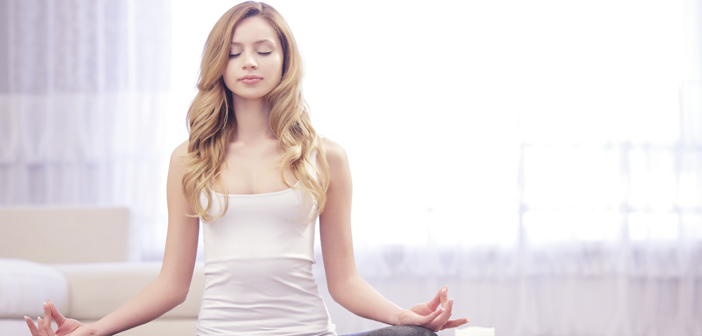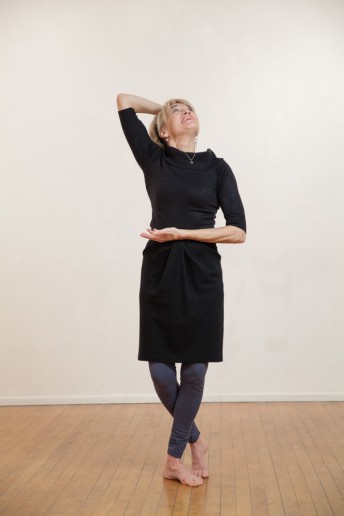 Yoga, westernized, is considered a Complimentary Alternative Medicine (CAM) while its eastern origination (Patajali’s yoga sutras) identifies Yoga as a thorough hygiene of the mind and body in order to attain heightened consciousness. Most Westerners, in their preference for practicality, simplify yogic discipline down to two of the eight limbs of yoga: pranayama (regulated breathing techniques) and asana (a yoga pose). Hatha yoga is the result of this consolidation, and Western students of Hatha yoga attain substantial benefits including improved lung capacity, flexibility and strength. Consistency in practicing the poses in coordination with breathing will also develop a propensity for more healthful living, and one may decide to encompass the remaining six limbs: yamas (five codes of conduct), niyamas (five hygiene guidelines/observances), pratyahara (withdrawal of the senses/stillness of mind), dharana (concentration), dhyana (meditation), and Samadhi (heart and mind unify to create heightened state of consciousness).
Yoga, westernized, is considered a Complimentary Alternative Medicine (CAM) while its eastern origination (Patajali’s yoga sutras) identifies Yoga as a thorough hygiene of the mind and body in order to attain heightened consciousness. Most Westerners, in their preference for practicality, simplify yogic discipline down to two of the eight limbs of yoga: pranayama (regulated breathing techniques) and asana (a yoga pose). Hatha yoga is the result of this consolidation, and Western students of Hatha yoga attain substantial benefits including improved lung capacity, flexibility and strength. Consistency in practicing the poses in coordination with breathing will also develop a propensity for more healthful living, and one may decide to encompass the remaining six limbs: yamas (five codes of conduct), niyamas (five hygiene guidelines/observances), pratyahara (withdrawal of the senses/stillness of mind), dharana (concentration), dhyana (meditation), and Samadhi (heart and mind unify to create heightened state of consciousness).
As the Yogis discovered, the cumulative effects of willfully directing the breath while assuming various physical poses provided them a youthful level of vitality for their mind and body. This vital force was directed by the power of the will to body functioning and healing. They maintained their youthfulness into old age. Now that is something to be JOYful about! How many of us would jump for JOY if we better navigated the effects of aging?
In order to find your joy, begin letting your heart lead your posture. Is it possible to reconnect to our buried radiance? Start with knowing more about what we all take for granted, our breath. Learn to still your mind, still your body, be with your breath, and listen to your heart; give yourself this New Year’s gift.
Yogi Ramacharaka, author of The Hindu-Yogi Science of Breath, shares the following:
“Man in his normal state has no need of instruction in breathing. Like the lower animal and the child, he breathed naturally and properly, as nature intended him to do, but civilization has changed him in this and other respects. He has contracted improper methods and attitudes of walking, standing and sitting, which have robbed him of his birthright of natural and correct breathing … and the result is shown in contracted chests and stooping shoulders, and the terrible increase in diseases of the respiratory organs.”
To help you become more mindful of your breath, maintain your attention to the present moment, and expand your lung capacity by eliminating shallow breathing, follow these simple instructions for a complete breath:
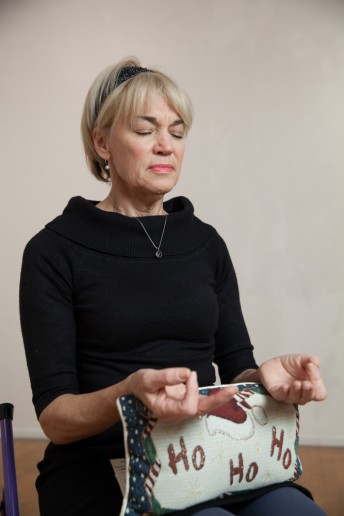
1. Sit or stand erect. Breathing through the nostrils, inhale steadily filling the lower lungs, and allowing the diaphragm to descend and expand the abdominal walls. Retain breath a couple seconds before exhaling. Practice three breaths using Hand Mudra #1 (breathing at bottom of lungs).
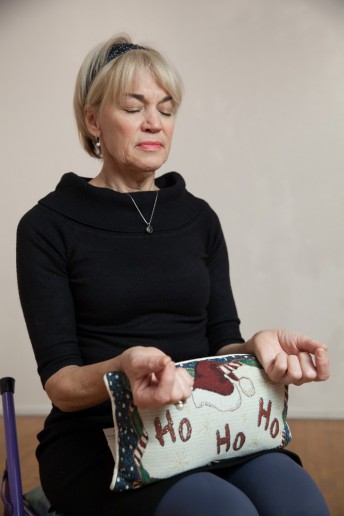
2. Take an additional three breaths filling the middle lungs pushing out the lower ribs, breastbone, and chest, using Hand Mudra #2 (breathing at middle of lungs).
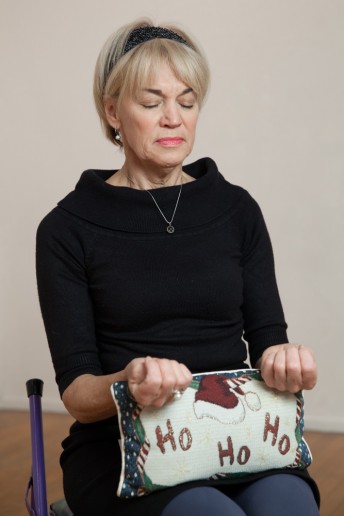
3. Again, take three breaths, slightly pull-in on the abdomen to fill the collarbone space, using Hand Mudra #3 (breathing at top of lungs).
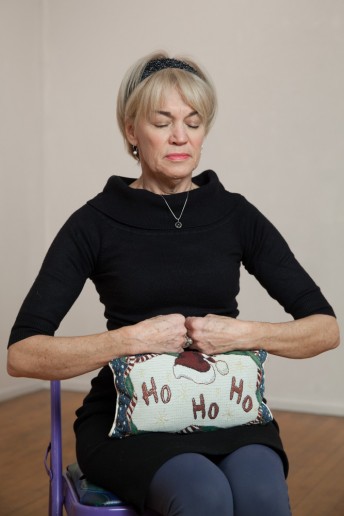
4. Finally, take three more breaths continuously inhaling until the bottom, middle and top of lungs have reached capacity then exhale slowly holding chest in firm position, drawing the abdomen in slightly and lifting it upward as air leaves the lungs, using Hand Mudra #4.
Unify your mind and heart while you move your body. You can find the delicate balance between determination and surrender while attempting the victorious and expansive Deviasana (as pictured), as well as poses that focus on releasing resistance elsewhere. It’s all about finding JOY through the freedom of rhythmic breath and movement in all directions.
Hand Mudras
#1 is thumb and index touching with three remaining fingers straight
#2 is thumb and index touching with fingers pulled into palm
#3 is thumb pulled into palm and four fingers wrapped around thumb
#4 is hand position 3 pulled into upper abdomen just under sternum with knuckles touching
Photography by Mike Naddeo

